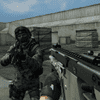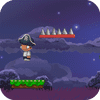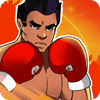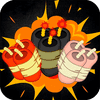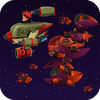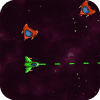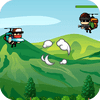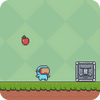Let’s discuss the ending of Tears of the Kingdom
End the tears, king
Three weeks have passed since the release of The Legend of Zelda: Tears of the Kingdom, a massive sequel to “Breath of the Wild.”Using the same Hyrulean setting, it’s reasonable to say that Tearsenormously expands on its foundation.
Regardless of its scope, it seems like people are finally starting to catch on. I’ve uncovered a few spoilers floating around online, however the gaming community has done a great job of keeping some of the more outrageous techniques under wraps. I don’t know if this is the most story-focused Zelda game, but it’s certainly up there.It’s not just the action sequences, but also the dialogue. The entire planet. How non-playable characters (NPCs) respond to and advance narratives from prior games.
I wrote a little something about the Pokemon Scarlet and Violet ending sequence back around when those games came out. It gave me a place to go out some of the thoughts I’d been having about the meaning of the game’s astonishingly brilliant conclusion. It also provided a forum for those who had rolled credits to share their own stories.
Why not do the same with Tears of the Kingdom, I reasoned? After the disclaimer of spoilers, all bets are off.Let’s discuss the conclusion of Tears of the Kingdom and whether or not it effectively wraps up the story.
Keep in mind: Massive, complete, endgame spoilers ofTears of the Kingdomfollow.
There is a light
Kingdom’s TearsThe fact that Nintendo was able to confirm and secure exactly what this video game would have to do with within a matter of minutes after the show’s initial reveal at E3 2019 was a bonus. The Zonai do count as well. The Demon King, Ganondorf. In a flash of light, Zelda disappears. Through an Emiya’s arm, we’re getting help from a mysterious voice named Rauru.
After confronting a wide variety of local phenomena and giving our local agents back the authority of the Sages, we finally start to get a glimpse of the truth. Ganondorf is controlling the “Zelda” everyone has been seeing as a puppet to prevent the return of the Sages who once imprisoned him. Under Hyrule Castle, he is amassing an army and prepares to launch another attack on the surface world.
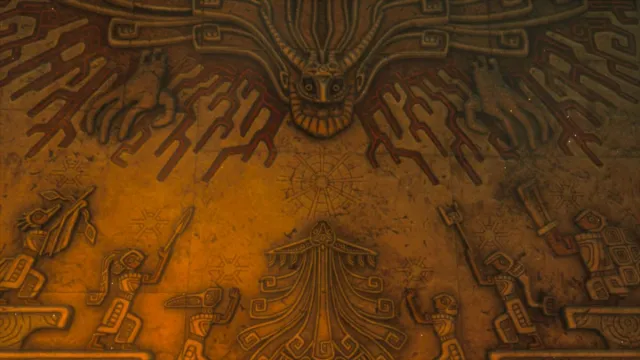
If we investigate the geoglyphs that presently dot the terrain, we will undoubtedly find many more. A number of years have passed since Hyrule was created, but Zelda is still in the past. She appeases the Zonai King Rauru, who descended to Hyrule with his Hyrulian wife Sonia and his brother Mineru, the Sage of Spirit. Like Sonia, Princess Zelda of Breath of the Wild possesses the capacity to manipulate time, and she also possesses the ability to seal.
Things deteriorate, Ganondorf grows, kidnaps Sonia’s secret stone, and becomes the Demon King. Zelda transforms into the Light Dragon to repair the Master Sword after it has been damaged during the ongoing conflict, and Rauru makes a tremendous sacrifice to seal Ganondorf.
A sending to prison war
I promise that I am not merely summarising Tears of the Kingdom for the purpose of doing so; rather, I am doing so to emphasise just how much tale we get, through so many different avenues. History seems to be clinging to every corner of the Hyrulean world. They are literally raining down from the heavens, only waiting to reveal even more of Hyrule’s hidden past.
Tears is an excavation, in contrast to Breath of the Wild, which was more like a scavenger hunt through ancient ruins in search of artefacts. Both Link and the player are compelled to take an active role in exploring Hyrule’s history. A big reason for this is the way the story missions are set out, complete with powerful cutscenes and emotional moments. I also found that the game’s tone connected heavily with the gameplay, especially in the Depths.

I just finished writing a little bit on what makes the Depths so fun to play for me. They’re fascinating too when viewed through the lens of history and custom. In essence, they reflect the surface area. The names of the shrines and the lightroots are mirror images of one another. Below the lofty summits of the mountains are a network of gorges. More and more players are discovering that Nintendo’s unique take on the underworld is reflected in these Depths.
Yes, that does include the lots that are roughly at the same time as the present in the story and a connection to Link to the Past. The addition of the floating islands in the sky reveals Nintendo’s whole plan for Zelda’s backstory. This series of adventures in Hyrule, and the drive to see how far it can go, interacts with the heavens, the earth, and the depths.
A sword slumbers
We’ve finished up the main tasks at hand. Recruit the Sages, including Mineru in his defective new mech. We find Zelda, trapped as a terrifying new dragon kind, and rescue the Master Sword. You can beat up Master Kohga if you want to find out where Ganondorf is hiding, but he seems like an obvious target.
Everything falls into place, and Purah gives us the okay to go whack Ganondorf over the noggin. I was feeling a little mixed up right now. Zelda’s outing as the Light Dragon and subsequent permanent presence on Earth felt off to me. We’d just played through an entire game with Zelda imprisoned behind a barrier, waiting for Link’s help to permanently imprison Calamity Ganon after a century. Then Tearszaps her to the past and forces her to commit the ultimate lovely taboo in order to protect the Master Sword for Link to whack Ganondorf with it, forever changing her very essence in the process.
As I continued to descend into the bowels of Hyrule, that stayed with me. And let me just say that your final charge at Ganondorf left me quite impressed. It just keeps on going without stopping. As the atmosphere grows darker, every obstacle appears to be placed directly in your path. To get by a handful of them, I did the least stylish scramble you’ve ever seen, involving some gloom hands and a gloomy Lynel.
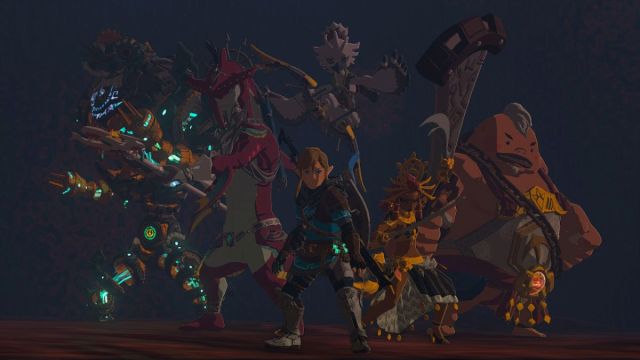
A brand-new age
We proceed directly to the mural. All of this, from the Demon King’s imprisonment to Zelda’s transformation, was fortuitous, and I like that we recognise that these rocks are breakable and can shatter them, unveiling the hidden reality. Maybe it was always there, like the glyphs and the islands in the sky were before the cycle began. My brain hurts when I think about this Guide line of thinking, so I try not to.
In a spectacular set piece, the sages work together to wipe out Ganondorf’s army, and they each go after their own personal demons to clear the way for Link to go fight Ganondorf himself. And the confrontation with Ganondorf is incredible; at first, a tense swordfight in the depths, where he can parry Link’s Flurry Rushes and set up a solid struggle. By embracing his own forbidden, he becomes a Dark Dragon. Zelda suddenly emerges to aid Link, and the two of them proceed to kick some dragon rear ends.
Everything here is perfect for me, but the next part is what finally brought Tears of the Kingdom inside.
Falling, flailing
After Rauru and Sonia have de-dragonified Zelda, I think one of my favourite scenes of Tears of the Kingdom is when they plummet towards her.It’s a gameplay minute, and I think that’s significant since it illustrates a lot of the points I made above. You started the game by jumping off of floating islands in the sky. Except this time, you’re hammering on the dive button, hoping to grab hold of something before you touch down.
This is a fantastic conclusion to the narrative. Even while Zelda’s position as the future leader of Hyrule is bolstered by the final, optional epilogue and the sages’ assistance in reconstruction, it is the plummet down and the set’s final rejoining in the yard that hurts me the most. Zelda’s sacrifice was monumental, but not irrevocable, and she will be able to return to her normal life in modern Hyrule. Zelda’s big reveal as the Light Dragon was great, and I enjoyed the moment when Link and Zelda were reunited, but I wished she had a larger role in the main tale.

The climax is where it really hits home. Although thwarting Ganondorf became a secondary task, protecting Princess Zelda remained the primary focus. When nowLink reaches his destination, the narrative comes to a close. They might not be canonising the romance, but it’s still a great story.
Kingdom’s Tearsis a massive, enormous planet. Breath of the Wild, a massive video game with a tonne of content, seems random in comparison. More hands and connection points indicate increased conversation and interaction as Link builds and rebuilds relationships with his neighbours.
In the end, this is a tale about the bonds we form and the importance of fighting to protect. A glimmer of optimism for the future always prevails, despite the prevalence of old tricks and overwhelming odds. Which is a satisfying doctrine on which to close Tears of the Kingdom.
Your thoughts on the conclusion of “Tears of the Kingdom”? Feel free to discuss it in the comments below, spoilers and all.
![]()
Eric Van Allen
Reporter for the Senior News Service – Eric has been writing about games since 2014, although he’s been playing them for much longer than that. The Limsa Aethryte is a common place to find them when they are not grinding RPG battles, delving into an indie gem, or just hanging out.
More Stories by Eric Van Allen









